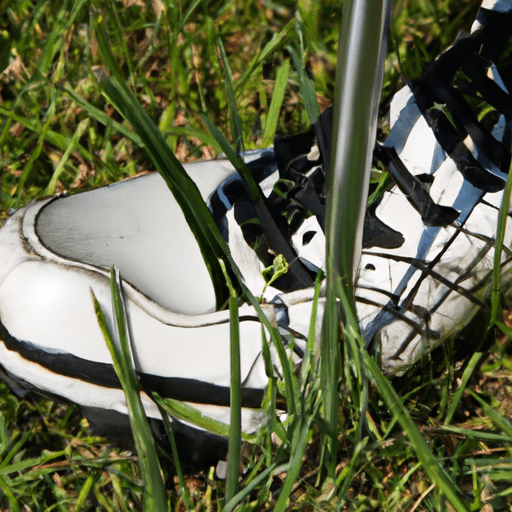Imagine stepping onto the lush green fairway, the sun warming your back as you prepare to take your swing. As a golfer, understanding the intricacies of weight shift in your golf swing is crucial to mastering the game. By grasping the concept of weight transfer from one foot to the other during the swing, you can create a smoother and more powerful stroke. In this article, we will explore the importance of weight shift and how it can elevate your golfing skills to new heights. So grab your clubs, because it's time to dive into the fascinating world of weight shift in the golf swing.
Understanding Weight Shift in Golf Swing
The golf swing is a complex motion that requires a combination of coordination, technique, and power. One crucial element of a successful golf swing is weight shift. Understanding weight shift and incorporating it into your swing can greatly improve your performance on the golf course.
Importance of Weight Shift in Golf Swing
Weight shift plays a significant role in several aspects of the golf swing. It affects power and distance, ball striking consistency, clubhead speed, body rotation, balance, and stability. By mastering weight shift, you can take your swing to the next level and enjoy better results on the course.
Fundamental Elements of Weight Shift
Several fundamental elements contribute to a proper weight shift in the golf swing. These include balance, stance width and alignment, ground force reaction, center of gravity, and weight distribution. Understanding these elements and how they interplay with each other is essential for achieving an effective weight shift.
Addressing Balance and Stability
To execute a successful weight shift, you must establish a stable base. This involves maintaining balance and stability throughout your swing. Begin by creating a solid foundation with your feet planted firmly on the ground. Focus on keeping your upper body stable while utilizing your lower body for stability and power.
Weight Distribution at Address
Proper weight distribution at address sets the foundation for a successful weight shift. Distribute your weight equally between your feet, with a slight favor towards the balls of your feet. This balanced position helps ensure stability and enables a smooth transition into your backswing.
Backswing Weight Transfer
During the backswing, it's important to initiate the movement with minimal weight shift. Starting the backswing with a minimal weight shift helps maintain balance and posture. Then, gradually transfer your weight to your trail side while maintaining a stable lower body and flex in your trail leg.
Transfer of Weight during Downswing
As you transition from the backswing to the downswing, focus on shifting your weight to your lead side. This weight transfer facilitates proper sequencing and helps generate power. Utilize the ground force to create a dynamic impact and maintain your timing and tempo throughout the downswing.
Impact and Follow-Through Weight Shift
At impact, it's crucial to transfer your weight onto your lead side. This ensures a solid strike and maximizes the power and accuracy of your shots. Maintain upper body stability and allow for extension and rotation through impact. The weight shift should continue into the follow-through, maintaining a balanced distribution to complete the swing smoothly.
Common Weight Shift Mistakes
It's essential to be aware of common weight shift mistakes and avoid them in your swing. Excessive lateral slide, early weight transfer, lack of lower body engagement, failure to maintain balance, and poor timing of weight shift are some of the errors to watch out for. Addressing these mistakes can greatly improve your weight shift and overall swing performance.
Exercises for Improving Weight Shift
To improve your weight shift, you can incorporate specific exercises into your training routine. Start with slow swings that allow you to focus on proper weight shift fundamentals. Gradually increase speed and intensity while ensuring you maintain a solid weight transfer. Utilize video analysis to receive feedback and make necessary adjustments as you progress. Practicing with different lies and slopes can also help you develop a more versatile weight shift.
Incorporating Weight Shift into Practice
Make weight shift a focal point during your practice sessions. Focus on proper weight shift fundamentals, such as maintaining balance, initiating the backswing with minimal weight shift, and transferring weight smoothly during the downswing. Utilize video analysis to pinpoint areas for improvement and track your progress over time. Gradually increase the speed and intensity of your swings, and practice on different lies and slopes to develop a well-rounded weight shift that translates into improved performance on the golf course.
In conclusion, understanding weight shift in the golf swing is crucial for achieving success on the course. By incorporating proper weight shift techniques into your swing, you can increase power and distance, improve ball striking consistency, enhance clubhead speed, facilitate proper body rotation, and improve balance and stability. Pay attention to fundamental elements such as balance, stance width and alignment, ground force reaction, center of gravity, and weight distribution. Avoid common weight shift mistakes, and incorporate exercises and focused practice to improve your weight shift. With dedication and practice, you can master weight shift and take your golf swing to new heights.






